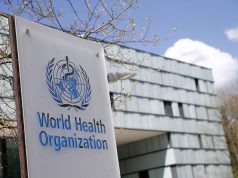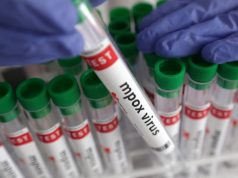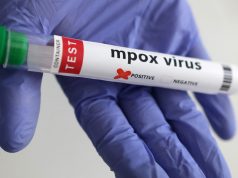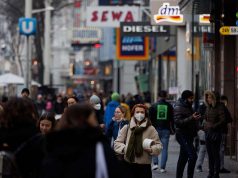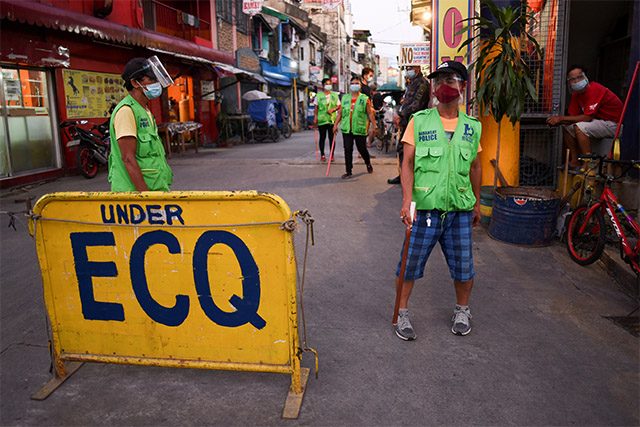
Quips about curfew hours, lockdowns and face shields surfaced online after the Philippines reported its first case of the Lambda variant of COVID-19 listed as a “variant of interest” by the World Health Organization.
The Department of Health on Sunday reported that the latest batch of genome sequencing by the University of the Philippines-Philippine Genome Center on August 12 yielded one variant that was initially detected in Peru in the same month last year.
The variant was from the sequenced sample of a 35-year-old female patient who was pregnant when she had tested positive on July 22.
The DOH said she was asymptomatic and was tagged as “recovered” after completing the mandatory 10-day isolation period.
It also said that she was probably a local case in Region 6 (Western Visayas), and not a returning overseas worker.
“Hanggang ngayon vina-validate ang information. We are closely coordinating with [the] specific locality where this individual is,” Health Undersecretary Maria Rosario Vergeire said on Monday.
The agency added that it is conducting continued contact tracing and collection of samples for whole-genome sequencing.
It is also coordinating with the patient’s hospital if she has already given birth as her expected date of delivery was late July.
“‘Yung virus po hindi siya nagko-cross ng placental barrier,” Vergeire said to DZMM Teleradyo.
“Lambda” trended on local Twitter the moment DOH reported its detection on Sunday afternoon.
Some people on social media expressed fear while others resorted to tweeting quips about some of the national government’s pandemic-related measures that have been criticized in the past.
“Paano nakapasok ang Lambda dito, may face shield naman tayo ah,” a Twitter user said in response to the reports.
“Bakit may Lambda variant na? Hindi ba effective ang face shields? Hindi nahuli sa checkpoints? Lumalabag ba sa curfew?” another online user wrote.
“Anong Lambda variant? Bago na naman (crying and weary face emojis). Bakit kasi ‘di nade-detect sa mga checkpoint ‘yan (weary face emojis),” commented a different user.
Another Twitter user shared a clip from “The Pit Stop,” an aftershow of “RuPaul’s Drag Race,” in response to the detection of the Lambda variant.
“Me, a Filipino living in the Philippines with Delta [and] Lambda variants surge looming and our government’s solutions are just lockdowns, checkpoints and face shields,” he wrote as a caption.
Me, a Filipino living in the Philippines with Delta & Lambda variants surge looming and our Government’s solutions are just lockdowns, checkpoints and face shields: pic.twitter.com/zAVC57VVcA
— 𝘑𝘰𝘴𝘦𝘱𝘩 (@iamsuperjopet) August 15, 2021
The use of face shields in the country’s fight against COVID-19 has since earned flak for the lack of sufficient studies proving its effectiveness in terms of reducing the virus’ transmission.
Two academics have noted that the barrier might not be as effective in protection since it is “not tight-fitting” and that “aerosols may still enter and exit around the outside of a face shield, where it’s not fitted in the same way a mask is.”
The DOH reasoned that face shields protect the eyes, citing the guidelines of the Philippine Society for Microbiology and Infectious Diseases and the University of the Philippines National Institutes of Health for COVID-19.
Enforced curfew hours, meanwhile, have sparked concerns on potential crowding in public spaces, specifically during commute when people would rush to go home due to imposed cut off hours on the road.
The curfew is meant to reduce people’s presence in public spaces in a bid to reduce COVID-19 transmission.
Another government measure that has been earning criticism is the enforcement of lockdowns which some said should be accompanied by rapid mass testing and aggressive contact tracing, not just limiting people’s movements.
Similar to curfews, the government imposes community quarantines to regulate movement and limit COVID-19 transmission.
The Lambda variant
The Lambda variant is tagged by WHO as a “variant of interest,” a tier lower than the “variants of concern” such as Alpha, Beta, Gamma and Delta.
The WHO said its earliest sequenced samples were from Peru in August 2020. It has since appeared in South American countries like Chile, Ecuador and Argentina.
The UN health agency flagged it as a variant of interest in June 2021 due to its association with “substantive rates of community transmission in multiple countries, with rising prevalence over time concurrent with increased COVID-19 incidence.”
“Lambda carries a number of mutations with suspected phenotypic implications, such as a potential increased transmissibility or possible increased resistance to neutralizing antibodies,” WHO said in its epidemiological update on June 15.
It acknowledged, however, that there was “limited evidence on the full extent of the impact associated with these genomic changes” and that further studies were needed “to better understand the impact on countermeasures and to control the spread.”
A study published in July, which has not yet been peer-reviewed, suggested that the mutations in the Lambda variant “confer increased infectivity and immune escape from neutralizing antibodies” of healthcare workers in Chile inoculated with Sinovac.
In terms of vaccine effectivity, DOH said that COVID-19 vaccines should still work as the Lambda variant does not affect cell-mediated immunity, according to Vergeire.
“Base sa analysis natin, hindi naman po siya mas kumakalat compared to the Delta variant,” she said on Monday.
“Wala ho tayong ebidensiya ng resistance against sa COVID-19 vaccine,” Vergeire added.
Dr. Alethea de Guzman, head of the DOH’s Epidemiology Bureau, said that WHO is still gathering data on whether the Lambda variant is more transmissible or resistant to vaccines.
“The fact that is still a variant of interest means that the World Health Organization is still gathering enough evidence to prove that it is indeed more transmissible or it indeed is affecting the vaccine efficacies of what we already are using now as our vaccines,” she said.





